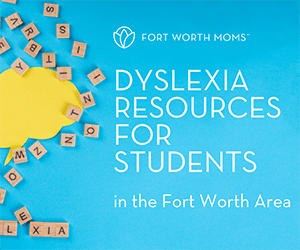Parenting or teaching a child with attention deficit hyperactivity disorder (ADHD) can be HARD! But being a child with ADHD can arguably be harder. That’s why it’s important to bust ADHD myths.
As a mom and a clinical psychologist/diagnostician working with adults with ADHD, I’ve encountered many well-intentioned but harmful misconceptions about the disorder. These misconceptions, held by parents, family members, teachers, and even treatment professionals can do real harm. In fact, they often contribute to the stigmatization, chronic self-esteem issues, and other negative effects that can follow children with ADHD into adulthood.
So let’s bust a few of the most prominent myths and misconceptions!
To love and teach a child with ADHD well, you must first understand the scientific basics.
Fact #1: The terms “ADD” and “ADHD” refer to the same disorder.
Attention deficit hyperactivity disorder (ADHD) is the current diagnostic term used to describe ALL people who have the neurodevelopmental disorder, which was previously referred to as “ADD.” The term “attention deficit disorder” or “ADD” is outdated and is no longer used. Why?
Well, the set of characteristics that have been identified as belonging to this disorder exist along a spectrum, just like nearly every other developmental aspect of humans. There are LOTS of different and varied ways people with this developmental disorder can present. Some appear very hyperactive externally and some do not. Some appear very impulsive behaviorally, and others less so. All this to say, diagnosticians now use subtypes to describe the features that are most predominant for any particular individual with ADHD. These subtypes include: predominantly inattentive presentation, predominantly hyperactive/impulsive presentation, and combined presentation (both inattention and hyperactivity-impulsivity are predominant).

Fact #2: ADHD is a genetic neurodevelopmental condition, NOT a mental health disorder.
Children do not develop ADHD due to bad parenting, poor discipline, too much sugar, food dyes, or excessive screen time. All of these previously held theories have since been debunked.
The research is now abundantly clear that ADHD is a brain-based, biological disorder that is usually inherited. Scientists are working diligently on discovering which genes are likely responsible for ADHD and are especially looking at those that relate to the production and release of the neurochemical dopamine (which is the primary target of ADHD medications).
Most clinicians estimate that children with ADHD are anywhere from two to three years to 30% delayed in the maturation of parts of their brain that are responsible for executive functioning and self-regulation (check out more on executive functioning HERE). For example, a 10 year old with ADHD may have the self- and attention-regulation abilities of approximately a neurotypical seven year old.
Fact #3: ADHD has NOTHING to do with intelligence. Many people with ADHD have high IQs and may be identified as gifted!
Many people with ADHD, especially those who are not identified until adulthood, grow up to self-identify as “dumb” or “lazy,” though they are actually quite intelligent and talented. The term “twice exceptional” is commonly used to describe learners who are both gifted and have a condition that may impact their learning (e.g. ADHD, autism, learning disabilities, anxiety, etc.).
The earlier a child is diagnosed and identified with ADHD, the less likely he or she is to grow up believing that difficulties are because of a personal failing. Identification, understanding, and support can help kids with ADHD understand and love themselves better over time!
Fact #4: The majority of people with ADHD do not “outgrow it” with age. But, many no longer meet criteria for the diagnosis in adulthood because they have developed strategies to work with their neurodiversity.
Understanding this can help parents, teachers, and adults who have children with ADHD take this diagnosis more seriously and begin to manage it as a chronic condition. A “wait and see” or “they’ll grow out of it” approach can be especially harmful for kiddos. Untreated ADHD can be associated with many negative outcomes that can be avoided with early and informed intervention and support.
#5: Children with ADHD are at a much higher risk for poor self-esteem and feelings of shame. This is due to the near constant negative feedback they receive from adults and peers for behaviors they largely do not control.
Current estimates suggest children with ADHD receive 20,000 more negative than positive messages about themselves by age 10! Can you imagine any child (or adult) whose self-image could withstand this imbalance? It’s heartbreaking.
Children with ADHD are often wrongly blamed or shamed for not controlling their behavior and attention like their neurotypical peers. Their neurologically-driven behaviors, emotions, and responses are often perceived as willful, personal failings that are within their control. Problem is, the entire foundation of the disorder is that ADHD brains cannot regulate behavior or attention to the same degree as other same-age peers! We essentially punish kids for being differently wired.
By the same token, children with ADHD can benefit enormously from positive, affirming feedback and attention. Attention for positive behaviors can often motivate more positive behavior!
Fact #6: ADHD affects EVERYTHING — not just attention.
A commonly overlooked aspect of ADHD is its impact on emotional expression. Many people with ADHD experience emotions, especially painful emotions like anger and sadness, much more intensely. They can also have greater difficulty regulating them (remember, this is a disorder of self-regulation).
One of the most helpful metaphors I’ve encountered is that having an ADHD brain is like owning a “race car with bicycle brakes.” This applies to emotions, attention, and behavior.
 Fact #7: People with ADHD can often focus just fine (or even intensely) on the things that interest them.
Fact #7: People with ADHD can often focus just fine (or even intensely) on the things that interest them.
Kids with ADHD don’t lack attention; rather, they have significant difficulty regulating the urge to attend to things around them, especially things interesting to them. The ADHD brain is an interest- and urgency-oriented brain, which is why so many people with ADHD are able to “hyperfocus” on topics that interest them or in situations where there is great urgency to complete a task.
Fact #8: Medication is the “first-line therapy” for ADHD. While behavioral interventions can also help, the research shows medication has the highest rate of success compared other treatments by themselves.
Why? Well it’s actually pretty simple when you understand the neurobiology of many of these medications. Brains with ADHD are deficient in dopamine in the same way that bodies with diabetes are deficient in insulin. Medications help make dopamine available to the ADHD brain in comparable amounts to the dopamine that is available to brains without ADHD all the time.
Would we ever ask a type-1 diabetic to “try harder” to make insulin? Of course not. So why do we ask kids with ADHD to “try harder” to make dopamine available to their brains?
Fact #9: Kids with ADHD can THRIVE with early intervention and supports!
While we still have lots to learn about ADHD, there is lots we already know to help these creative, caring, and awesome kiddos.
There is so much misinformation available, especially online. If you love a child with ADHD, seek out reputable and science-based resources that back up their conclusions with research that has been published by peer-reviewed journals. These sources can explain their reasoning and the evidence behind it. Your child with ADHD thanks you!
Fort Worth Moms is host to 20 Neighbor Groups on Facebook, including Moms of Special Needs Kids Tarrant Area, designed to bring community and additional resources to mothers.













